Every serious bowhunter eventually desires to venture away from home to explore new country or to pursue new game species. The bug bit me at age 13. My first bowhunt outside Wisconsin landed me in Upper Michigan chasing whitetails with my grandpa. I hadn’t the slightest clue what I was doing and, of course, I went home empty-handed. You tend to learn quickly that “affordable DIY bowhunts” don’t come easy.
The very next year, my older brother, Brad, and I put together a public-land pronghorn hunt in South Dakota. It was a family trip, with our parents driving us and our younger siblings simply tagging along for the ride. Brad and I both launched arrows at goats during our five-day hunt, but neither of us connected. Still, the hunt was a hoot, and it taught us that greener pastures do in fact exist.
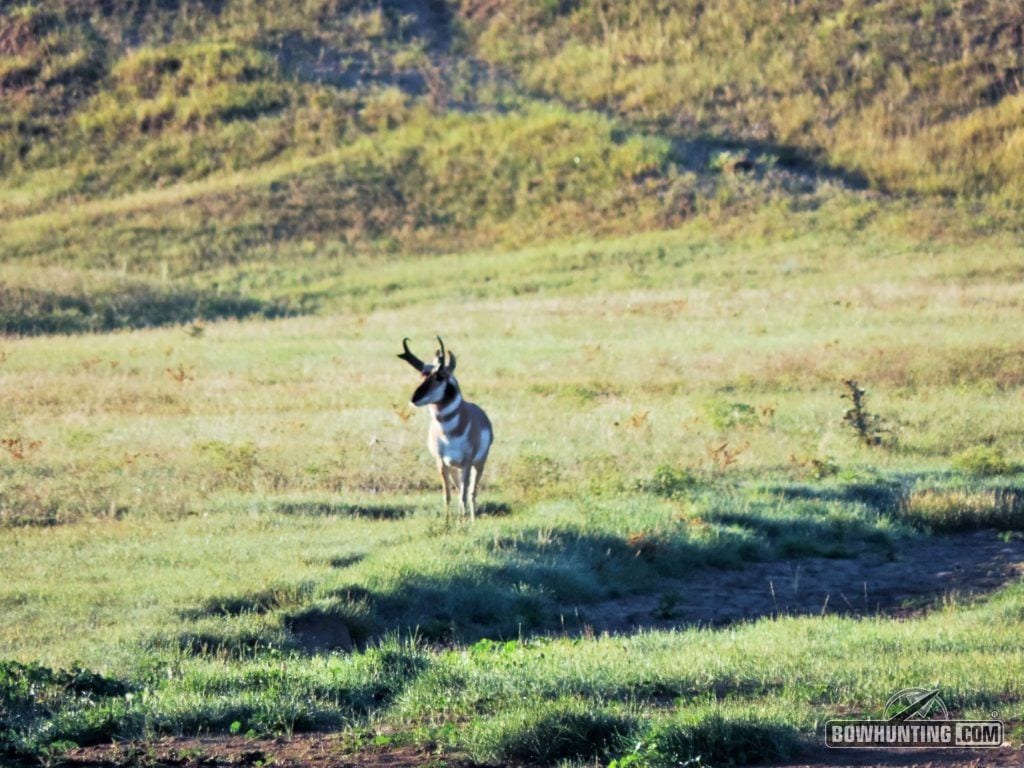
Antelope make a great entry-level western species. They’re available in excellent numbers, even on public lands, plus, tags are available over the counter, unless you’re looking to hunt a trophy state/unit.
Since my inaugural out-of-state bowhunts, I’ve traveled extensively to bowhunt for elk, turkeys, whitetail, mule deer and pronghorn. Of course, outfitted hunts for these species and others can cost between $1,200-$5,000 – in some cases, more. But, I’ve successfully taken each of these species on DIY public-lands bowhunts. The best part is these game species can be hunted affordably, and with over-the-counter tags.
If adventure calls, answer with one of these exciting fall road-trip bowhunts.
Pronghorn Antelope
If you desire to head west, and I do, antelope make an outstanding entry-level species for traveling bowhunters. Not only are their white-and-tan markings absolutely stunning, but their meat is second to none, too. Plus, herd numbers are excellent, and they’re visible all day long (they inhabit wide-open plains and prairies). Further, obtaining a tag is quite easy if you’re simply looking to tag any buck. Of course, trophy bucks are annually taken in mediocre OTC units, but many more are taken in draw units.
Wyoming, Nebraska and South Dakota and are good states with outstanding goat numbers. Wyoming is actually the West’s antelope capitol. While Nebraska and South Dakota offer OTC archery tags, Wyoming conducts a draw, then sells leftover tags once the drawing is complete. A hard-working bowhunter can do quite well in any of these states. Plan to hunt public lands, but always knock on a few doors. I’ve found that many ranchers couldn’t care less about antelope. In fact, many even view antelope as a nuisance since they gorge on alfalfa and other crops.
For antelope action, focus on waterholes in dry weather, or alfalfa throughout the season, regardless of conditions. Most successful bowhunters take antelope from blinds placed near water or alfalfa, but as the rut heats up in mid-September, decoys can pull bucks into range, too. And if all else fails, a careful spot-and-stalk approach can yield success.
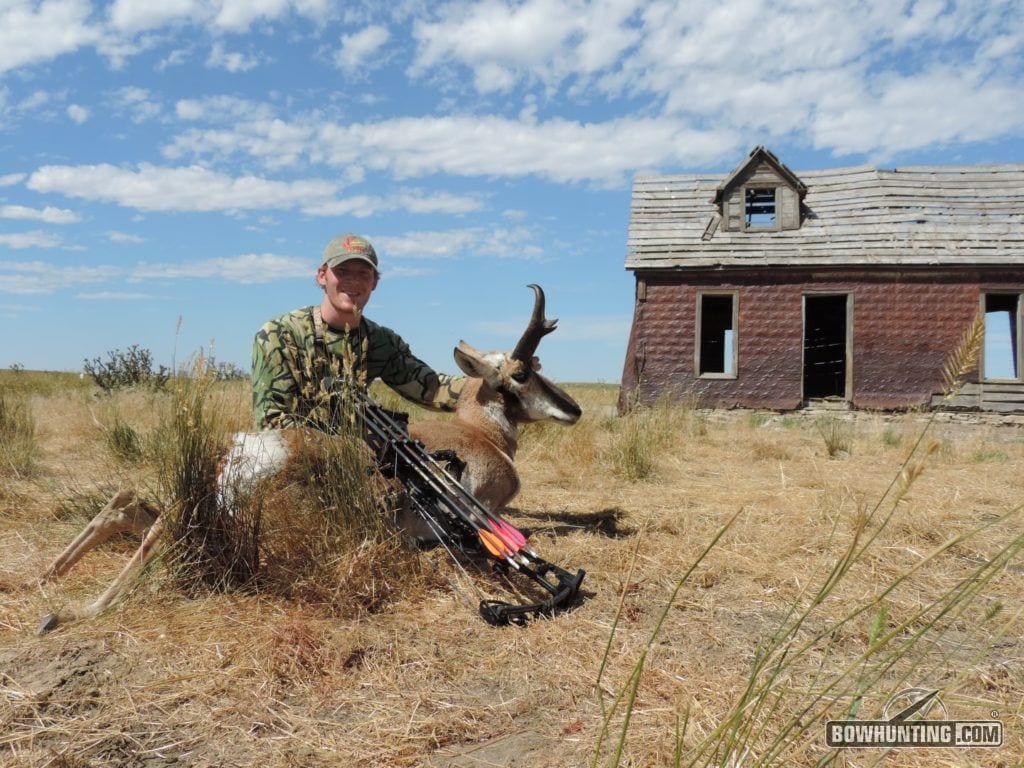
Brad McDougal nailed this nice Wyoming Walk-In Area antelope buck during a 2015 road-trip bowhunt with the author. Careful pre-hunt scouting yielded an opening-morning shot opportunity.
Mule Deer
I love whitetails, but I don’t pass up chances to hunt muleys. These big-eared deer are found west of the Missouri River, throughout the Southwest and in several Canadian provinces. Like antelope, mule deer inhabit open and broken terrain, so they’re quite visible, but mature bucks are mostly active at dawn, dusk and throughout the night.
Stalking in unfamiliar terrain is a challenging hunting method. But, it helps you explore new country with a bow in your hand. What could be better?Colorado, Nebraska, Montana, Wyoming, South Dakota and North Dakota are all good states with good to great deer numbers, and tags can be easily obtained for many units, although banking a few preference points in the westernmost states I mentioned can land you in units with little hunting pressure and larger bucks. But, solid public-lands candidates can be nabbed from OTC states/units.
I’ve found most ranchers are more protective of muleys than whitetails or antelope, so I recommend spending more time glassing for deer on public lands than driving past privately-owned fields full of gagger bucks, although a few knocks on doors could land you an opportunity to bowhunt for a reasonable “trespass” fee.
Ground blinds can sometimes put you within range of bucks, but more often, the somewhat unpredictable behavior of muleys makes the spot-and-stalk approach most effective. After bowhunting muleys more than a half-dozen times, I’ve found it takes experience to spot deer in broken terrain.
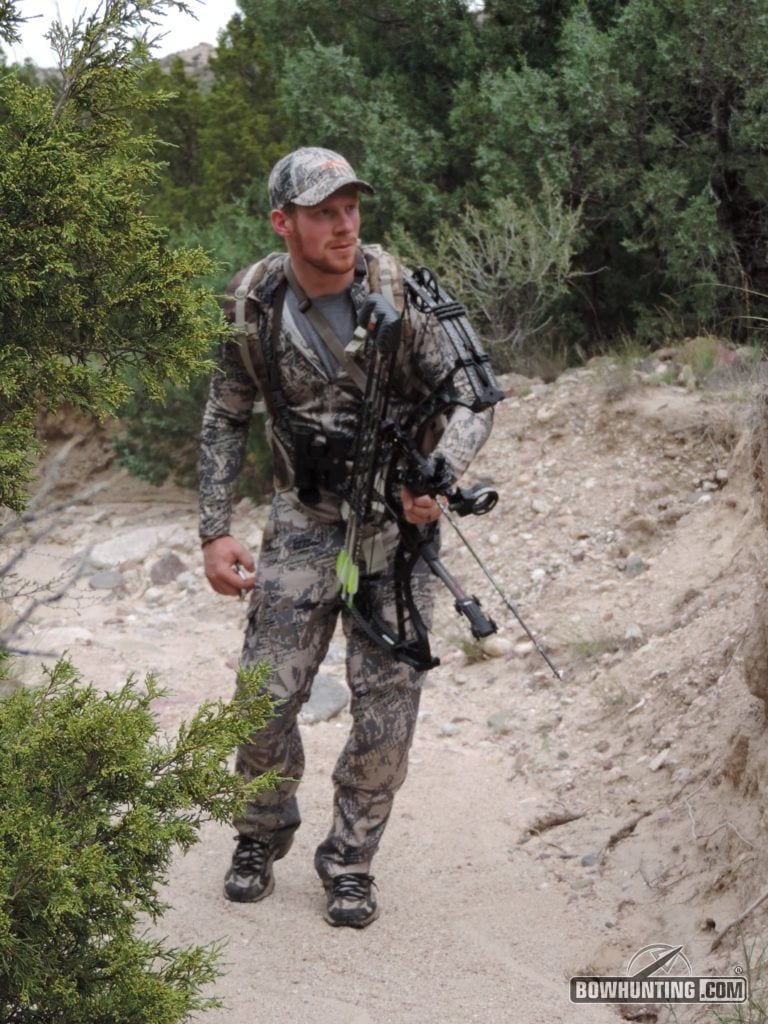
Stalking in unfamiliar terrain is a challenging hunting method. But, it helps you explore new country with a bow in your hand. What could be better?
Then, spotting a buck you want adds difficulty onto an already challenging task. However, hard-working out-of-state bowhunters can realistically expect to encounter respectable bucks during a weeklong hunt if they glass a lot early in the mornings and late in the afternoons. Closing the deal via spot-and-stalk requires great skill and attention to the wind and other details. Muleys, especially mature bucks, will always beat you when you approach from upwind. Believe me, I’ve tried it.
Elk
Nothing is easy about bowhunting elk. However, I’m warning you that the moment you hear a bull bugle, you’ll be hooked. I’ve bowhunted Idaho’s steep terrain three times now, and I’ve only taken one cow, though I’ve had chances to take bulls. Colorado, Wyoming and Montana are also solid bets.
Elk tags and fuel – depending on the distance you must travel – are the costliest expenses involved with bowhunting elk. However, penny pinchers can take an elk trip for around $1,200-$1,800. That’s if you camp in a national forest or on other state grounds and do your own meat processing. Anyway, that’s cheap considering that quality elk hunts with outfitters usually start at $3,000 or higher.
Public lands and national forests hold plenty of elk but, in most cases, you must work hard and hike deep to evade pressure from other hunters. And, forget what you’ve watched on outdoor-TV programs where hunters bugle bulls within spitting distance. More often, aggressive calling sends a public-lands bull the other way, although I’ve called bulls into range multiple times in the right situations.
Getting a shot is often the most difficult part of the equation. Getting within range of elk isn’t always tough, but closing the deal almost always is. Elk just have a way of approaching with obstacles blocking shots as they circle downwind of the caller. This is why it’s best to team up with a buddy, send him 50-75 yards behind you, and have him call the bull past you. Again, though, be prepared to work multiple bulls before one responds, as many either bugle and don’t come in, or simply run the other way. I’ve found the most reliable method is to avoid calling when a bull is bugling hot on his own. Let him be the loud-mouth, and slither closer each time he bugles.
Whitetails
The king of them all, the white-tailed deer is the most available species a traveling bowhunter can target. Plus, you can find them in practically every terrain setting imaginable, from Florida’s swamps to Canada’s timber. And in most places, they’re quite populous. When I road-trip for whitetails, I often head west of Wisconsin, my home state. I like hunting the plains and prairies. I find that seeing mature bucks isn’t all that difficult – conditions permitting – and determining where to place stands is far easier than in big timber.
Affordable OTC whitetail tags can be had in Ohio, Nebraska, South Dakota, North Dakota, Washington, and Oklahoma, to name several. Another solid bet is Kansas, where drawing an archery tag, depending on the unit, is usually an annual event. However, Kansas deer licenses are a bit pricier than the other states I mentioned.
If you live where hunting pressure is through the roof and trophy potential is low, a road-trip whitetail hunt can satisfy your adventure cravings. I do at least one out-of-state whitetail hunt per year, sometimes as many as three. I’ve done enough over the years to know that spending more time scouting than hunting is by far the most effective approach.
Sometimes, you’ll simply be dealt poor cards. Things like pressure, crummy weather or nocturnal movement will sap your chances for success. Still, persistent bowhunters are rewarded. I’ve taken multiple mature bucks from public lands on traveling bowhunts, including my largest, a 150-inch Oklahoma stud.
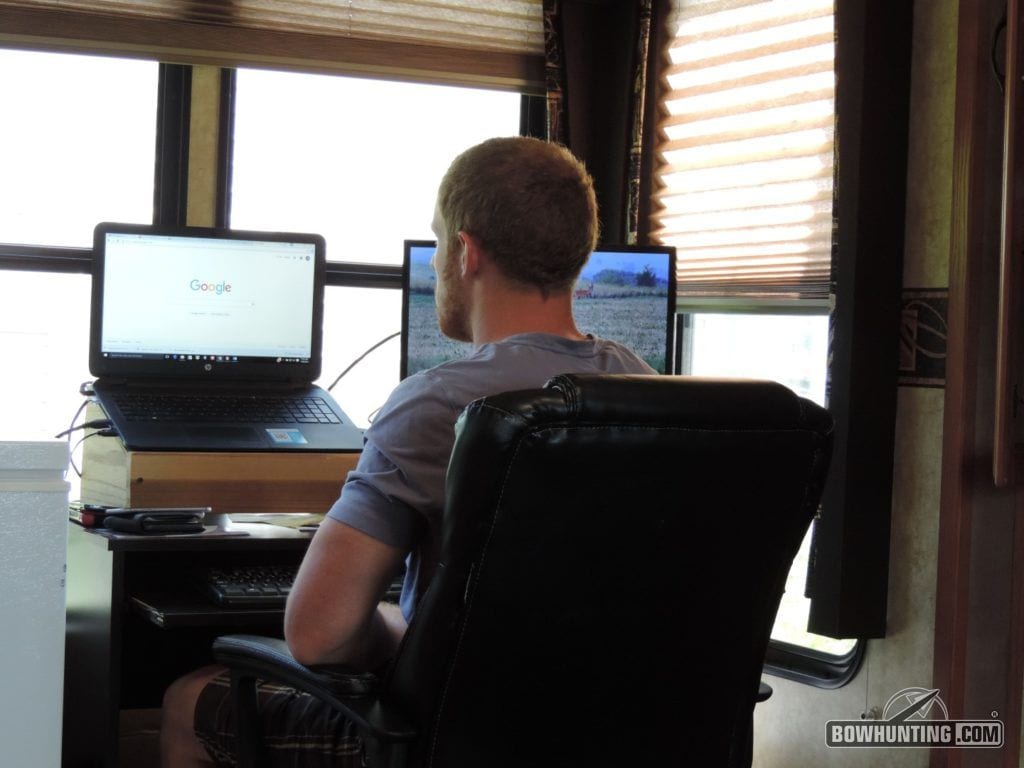
Research is a critical component to saving money and experiencing a great bowhunt.
Plan, Prepare, Go
To save money and ensure a quality experience, plan, prepare and research. I usually call local sporting-goods businesses and wildlife biologists to discuss game numbers, trophy potential and lodging options. However, I don’t get too excited or disappointed by what they say. Ultimately, I know I’ll have to see for myself. But, I’ll call off a hunt if several locals repeat the same story of low game numbers, heavy hunting pressure or poor trophy potential.
Small towns often have inexpensive lodging, although tent camping – weather permitting – is a money-saver. My brother and I did this last year during our Wyoming antelope hunt. Sure, it wasn’t quite as comfortable as a motel room, but it saved us more than $30 per day. A basic cookware set and propane stove will help you cook meals inexpensively, a great alternative to expensive restaurant dining.
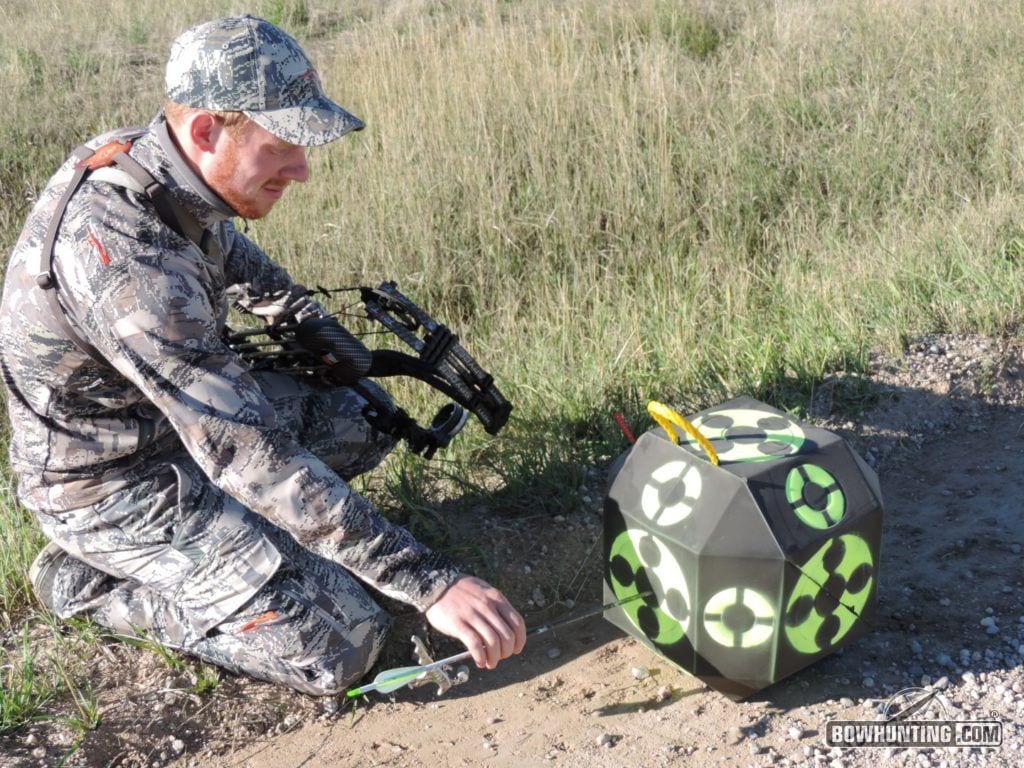
Always bring a broadhead target along on traveling hunts. Check your bow for accuracy before and throughout your hunt to be sure you’re ready when a shot opportunity arises.
Lastly, take a broadhead target along on every road-trip bowhunt. Traveling or climate changes can affect your zero, and you must practice before and during your hunt to ensure you’re on target.
I’ve provided you some basic ideas here for affordable DIY hunts. Once you do a few of these hunts, you’ll better understand the logistics. This will help you streamline for the next trip, smoothing out the experience and boosting your chances for success.

 By
By 



